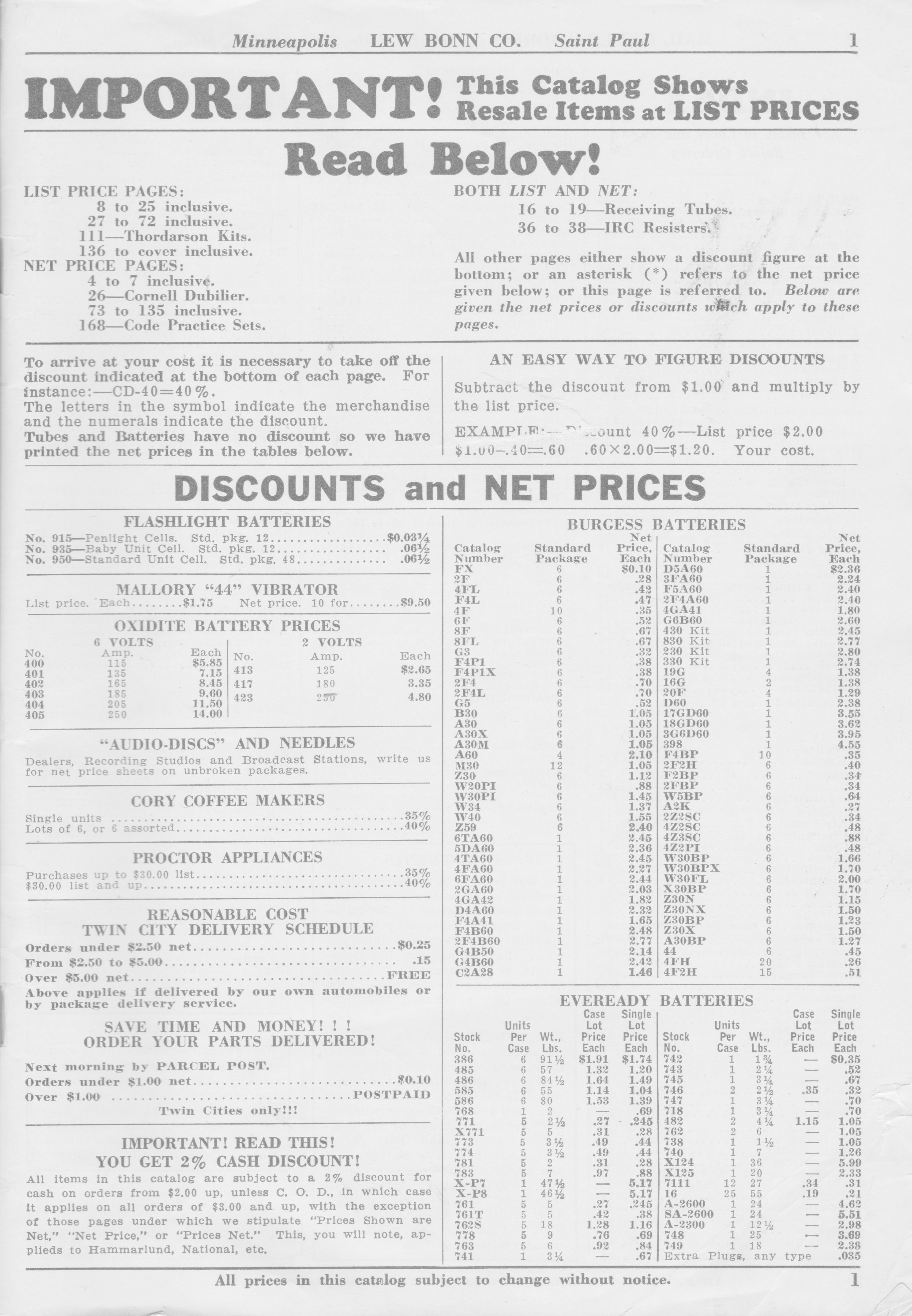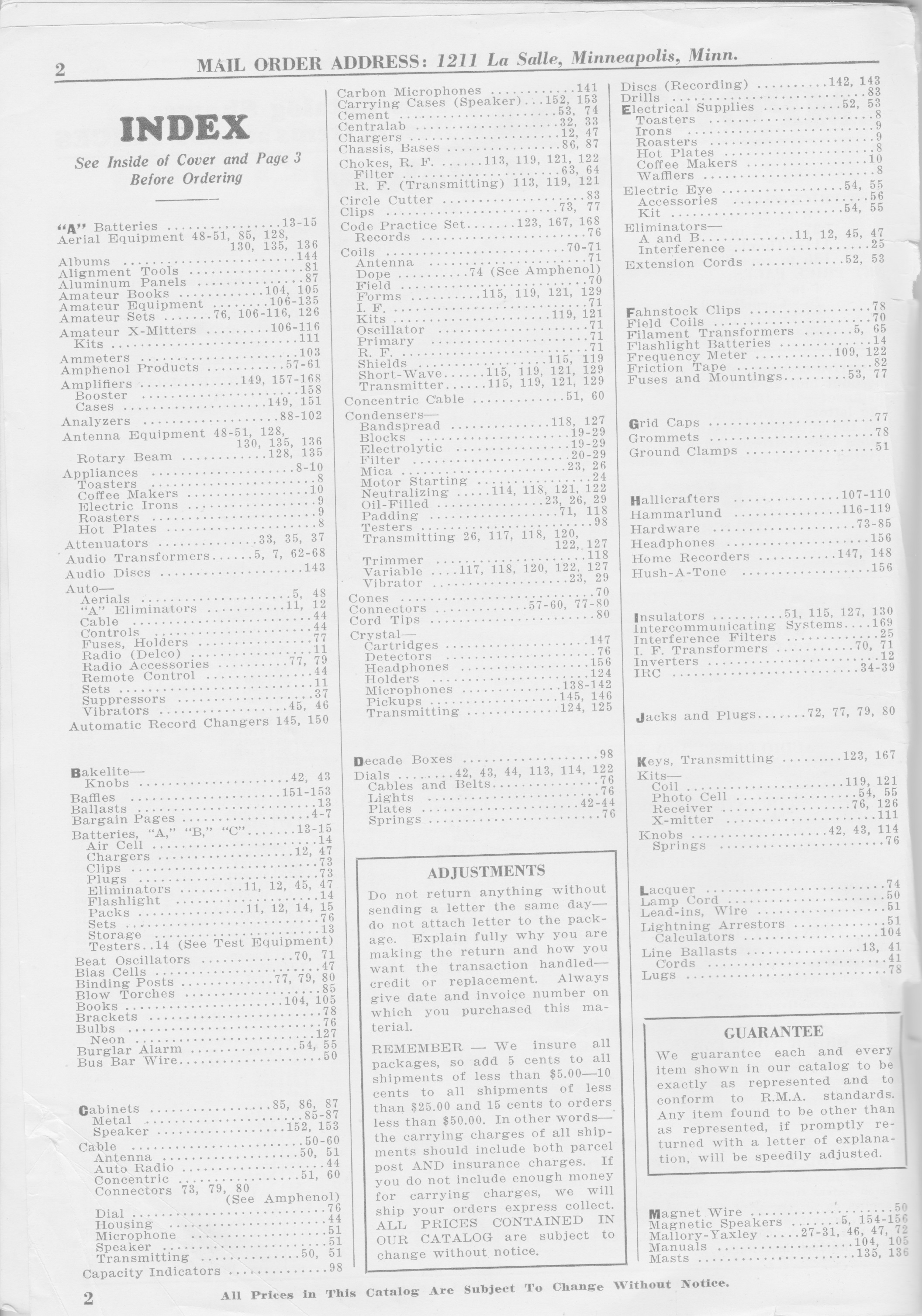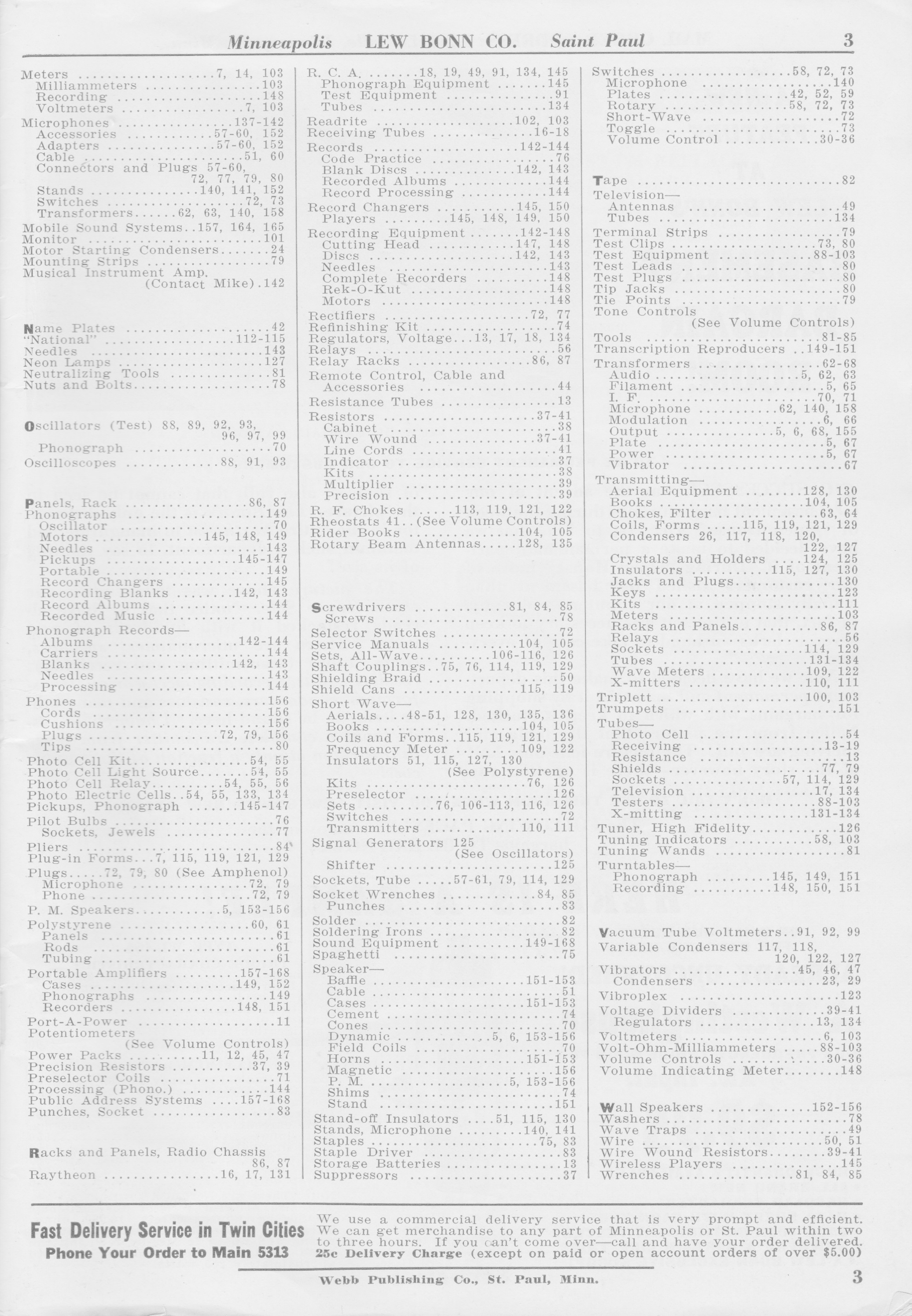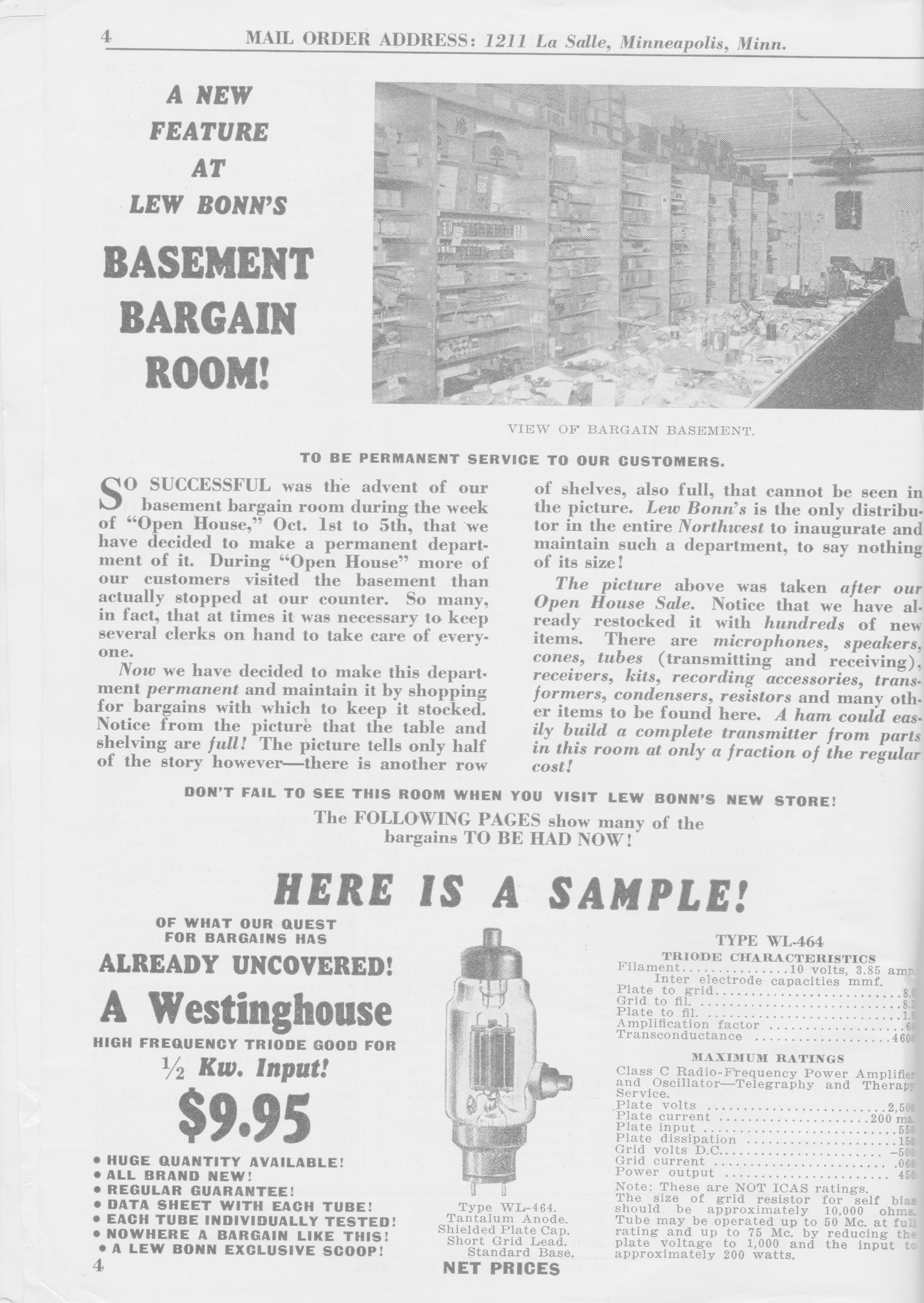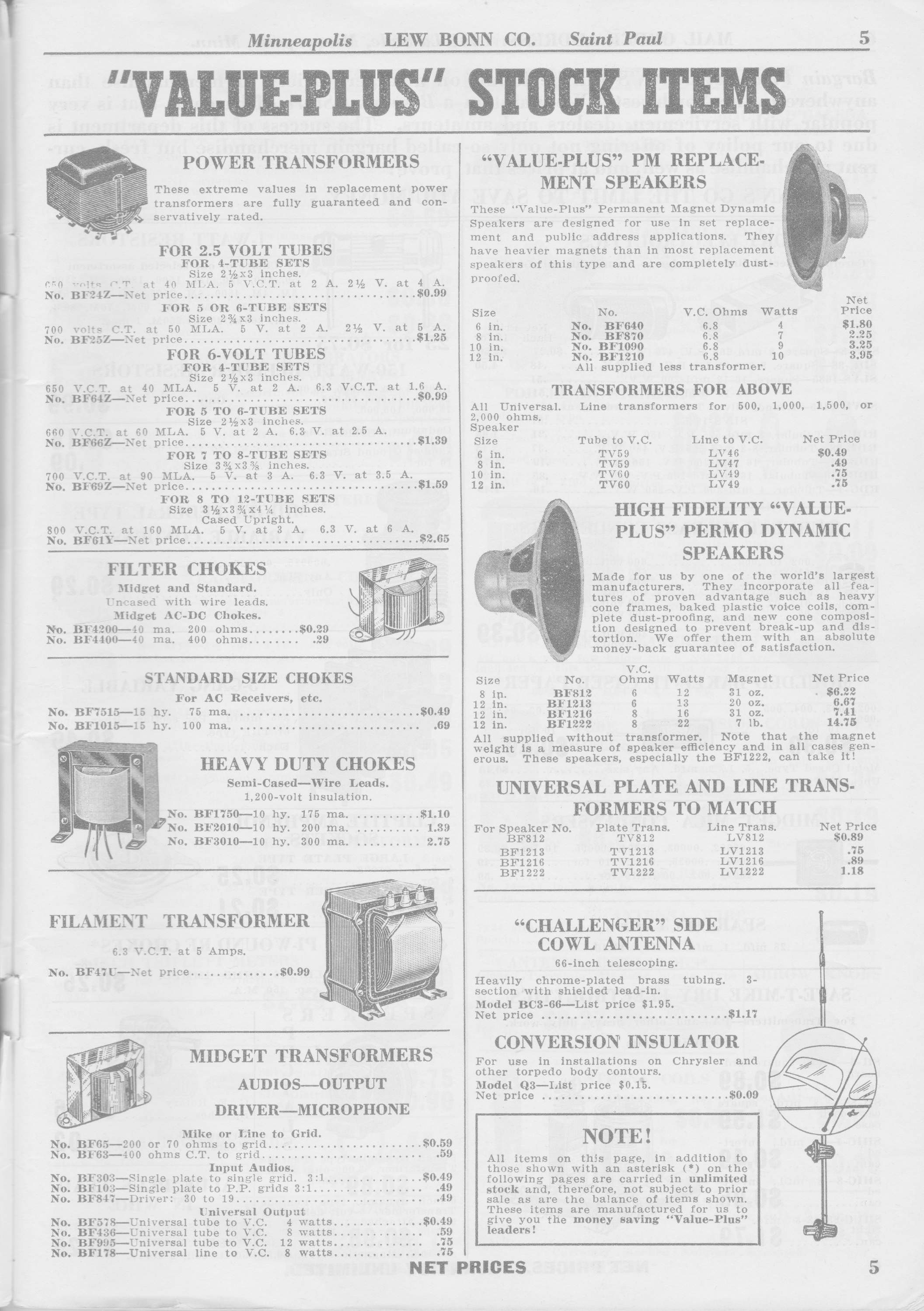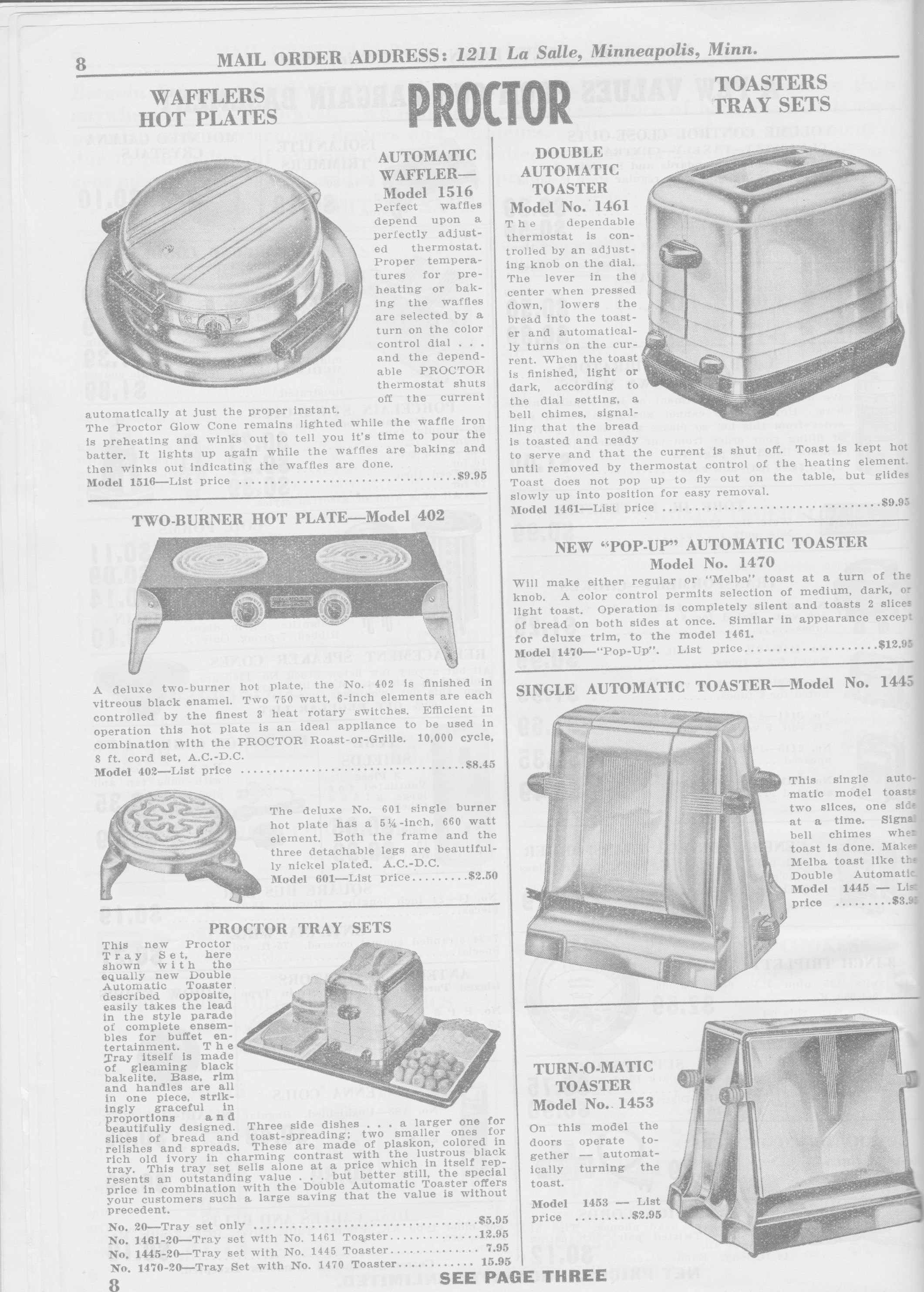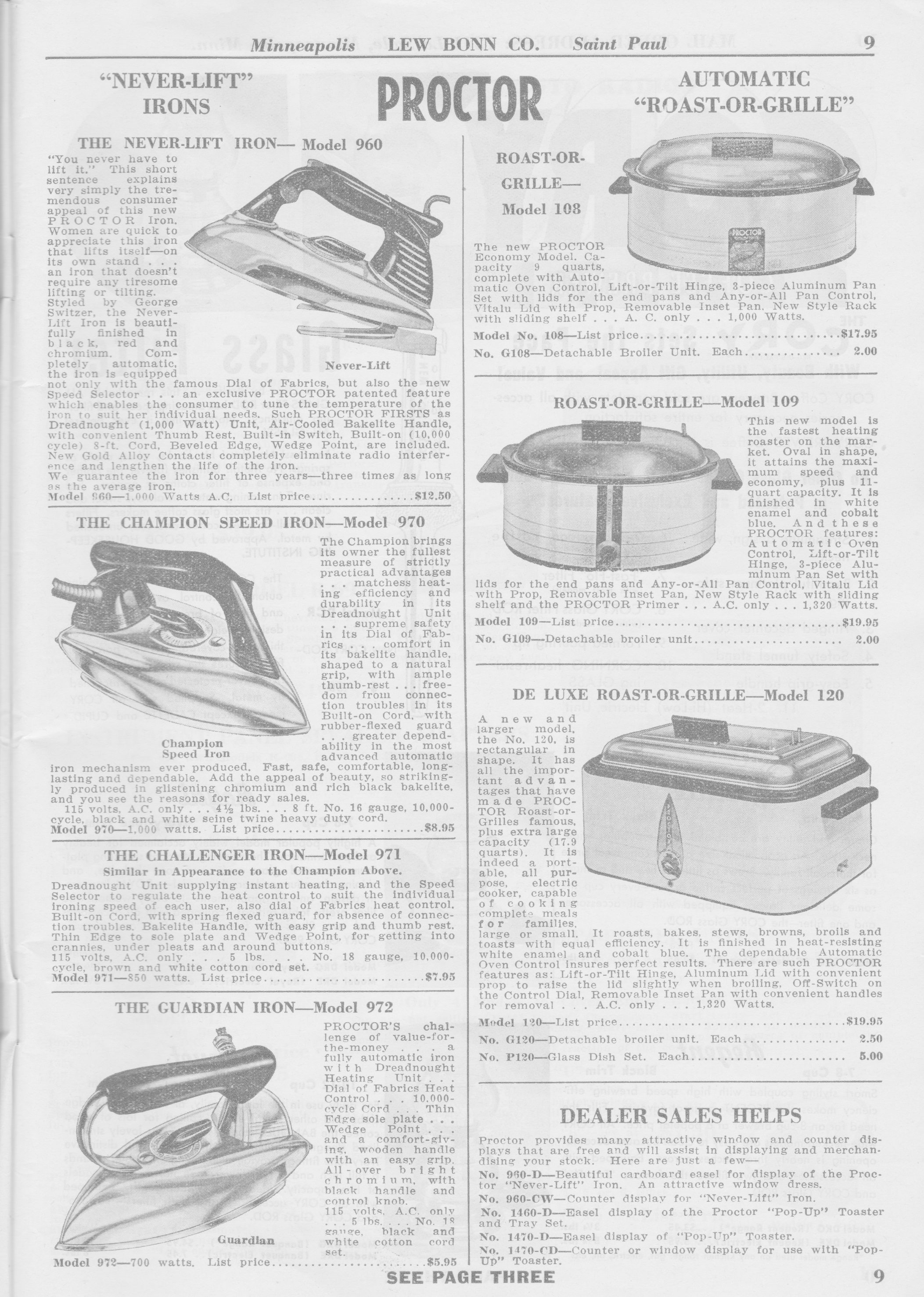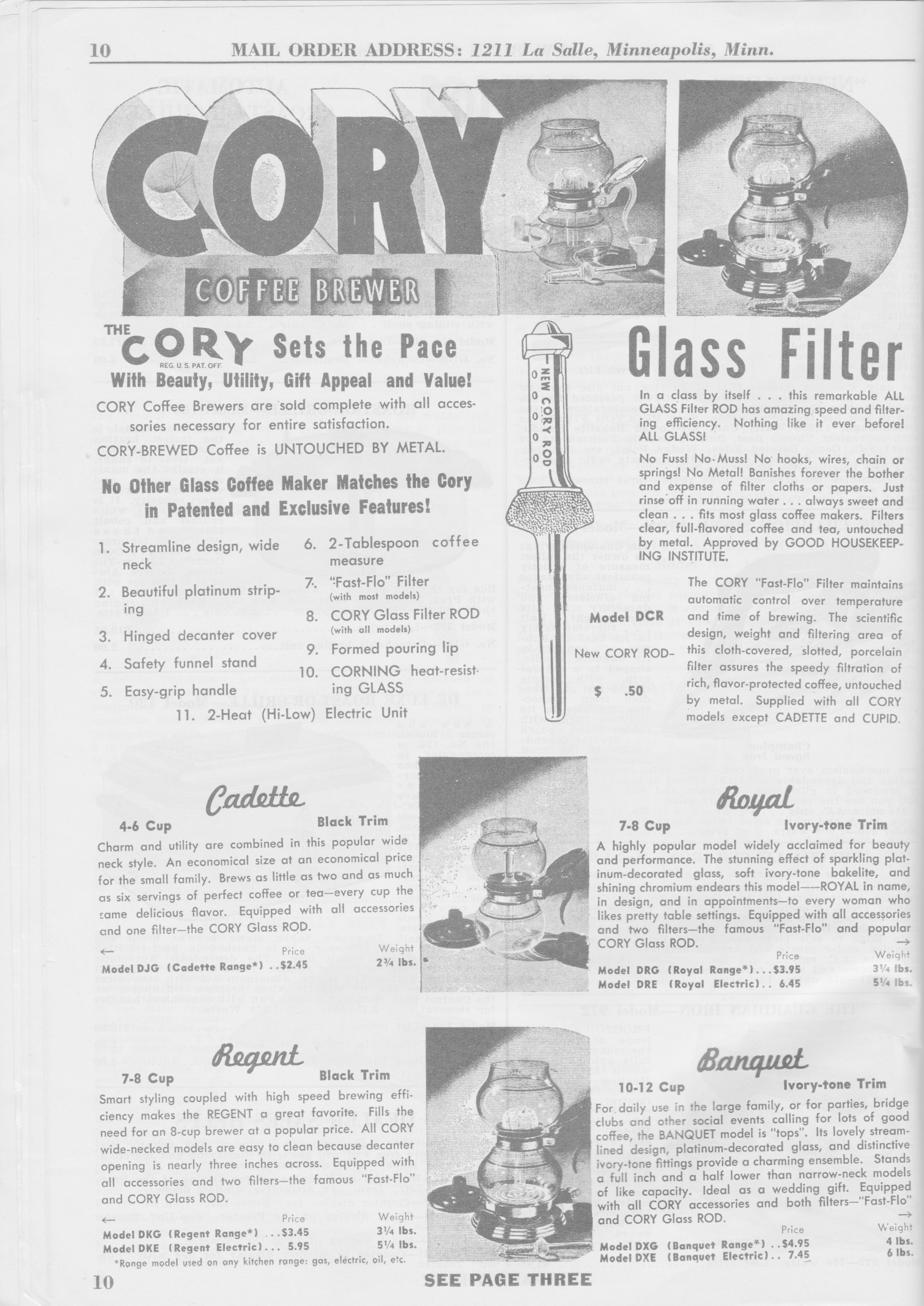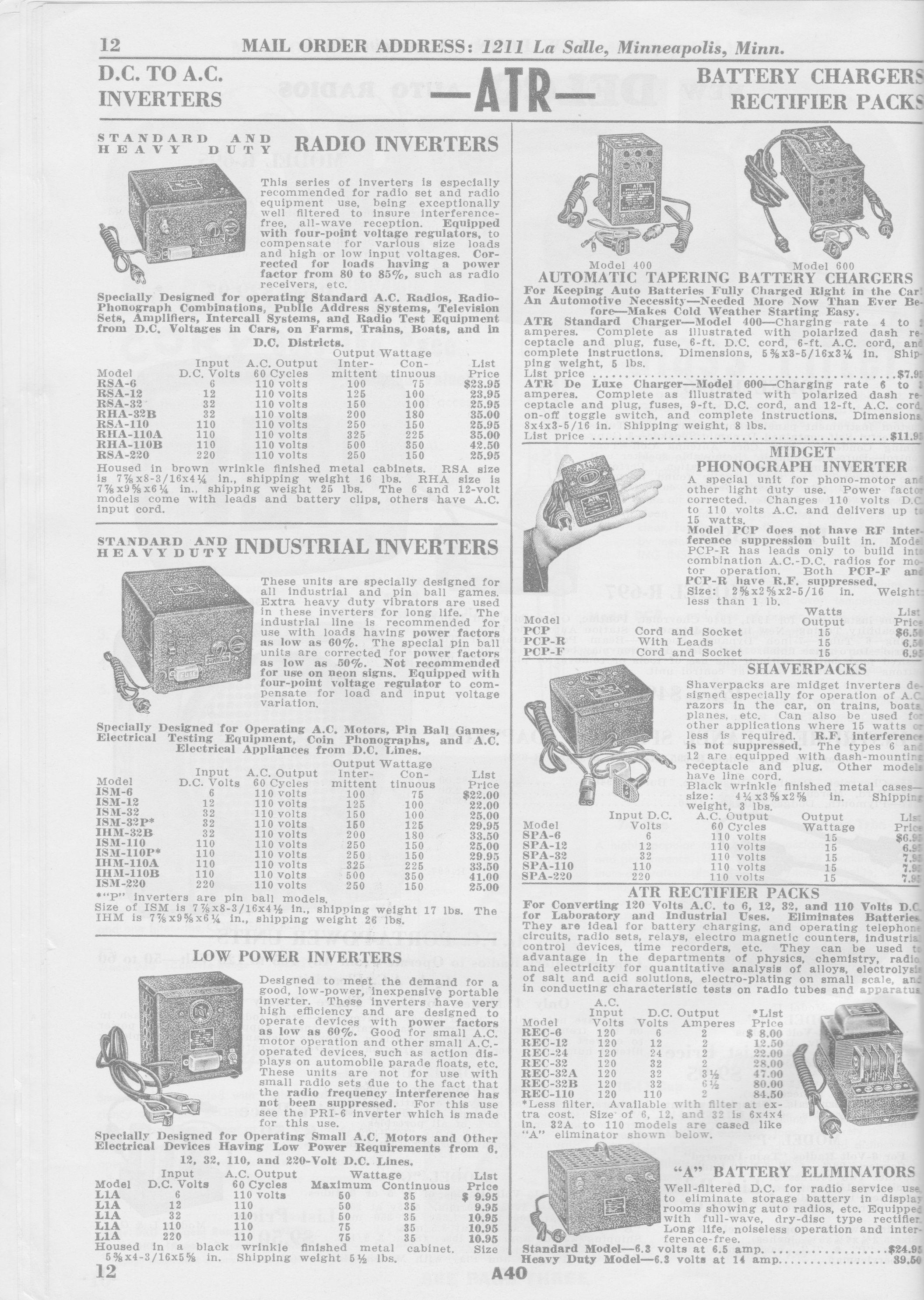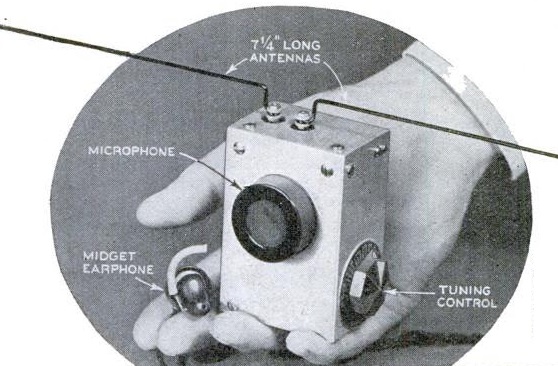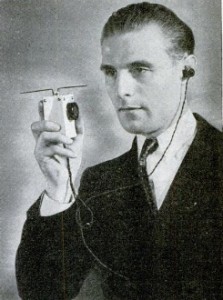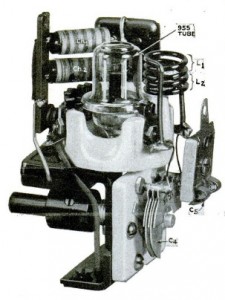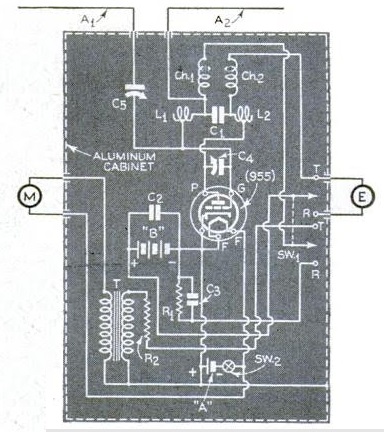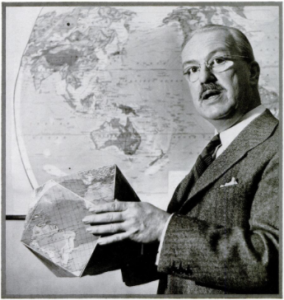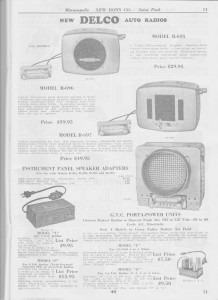 One of our readers recently sent us the catalog shown here. The full catalog is 168 pages, and we’ll periodically post a few pages.
One of our readers recently sent us the catalog shown here. The full catalog is 168 pages, and we’ll periodically post a few pages.
The catalog is from a distributor I had never heard of, Lew Bonn Co., 1211 LaSalle Avenue, Minneapolis. It doesn’t seem to have a date, but it appears to be from early 1941. The book listing includes the “new” 1941 edition of the Radio Handbook, and it also includes the Rider Manuals up through volume 11, covering 1940-41 radios. It also notes that the 12th volume will be available soon.
The catalog also contains a full selection of amateur gear, indicating that the catalog came out before Pearl Harbor. Therefore, I conclude that the catalog dates to early 1941.
Included here are the first twelve pages of the 168 page catalog. In the coming weeks, we’ll add more pages until it’s completely available. You can click on any of the images below to see a larger version.
Today, we present the index (pages 1-3), some of the specials to be found in the Bargain Basement (pages 4-7), electrical appliances (pages 8-10), car radios (page 11), and power supplies and inverters (page 12).

